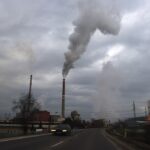According to the European Environment Agency’s (EEA) latest health impact assessment, just under 240,000 deaths per year in the European Union can be attributed to exposure to fine particulate matter. The assessment was published as new EU air quality rules entered into force on December 10, 2024.
The Hard Numbers Behind Air Pollution
The EEA estimates show that in 2022, 70,000 deaths were attributable to exposure to ozone pollution and 48,000 deaths to exposure to nitrogen dioxide pollution. These attributable deaths could have been avoided by meeting the WHO’s guideline values in 2022. Europeans continue to be exposed to air pollutant concentrations considerably above recommended WHO levels.
Environmental Degradation
The assessment uncovers concerning ecosystem damage. About 73% of EU ecosystems exceeded critical loads for eutrophication in 2022. The EU’s zero pollution action plan target of reducing nitrogen deposition-affected ecosystem areas by 25% by 2030 appears unlikely, with only a 13% reduction achieved between 2005 and 2022.
Agricultural and Forest Impact
Ground-level ozone has severely impacted European agriculture, with one-third of agricultural lands exposed to concentrations exceeding EU protection thresholds. This resulted in crop damage and estimated economic losses of €2 billion. Moreover, 62% of forest areas in 32 EEA member countries surpassed critical ozone levels set for forest protection.
“It is good news for all citizens that we have stricter EU air quality rules in place as of today, but still too many people across Europe, especially those in cities are negatively affected by poor air quality resulting in illness and premature deaths, which are largely preventable,” states EEA Executive Director Leena Ylä-Mononen.
More Stories
New Regulatory Framework
The revised ambient air quality directive (Directive EU 2024/2881) introduces new air quality standards to be attained in 2030 that align closer with WHO recommendations. It mandates monitoring of additional pollutants, including ultrafine particles, black carbon, and ammonia.
Health Impacts
Air pollution continues to be the top environmental health risk to Europeans, followed by other factors such as exposure to noise, chemicals, and the increasing effects of climate-related heatwaves on health. The impacts from living with diseases related to air pollution are significant and must be considered when assessing the overall health burden.
Looking Ahead
Significant decreases in emissions of sulphur dioxide (SO2) over recent decades have mostly addressed the problem of acidification. The new directive brings EU air quality limits values closer to the WHO standards, supporting further reductions in the health impacts of air pollution over the coming years.


















